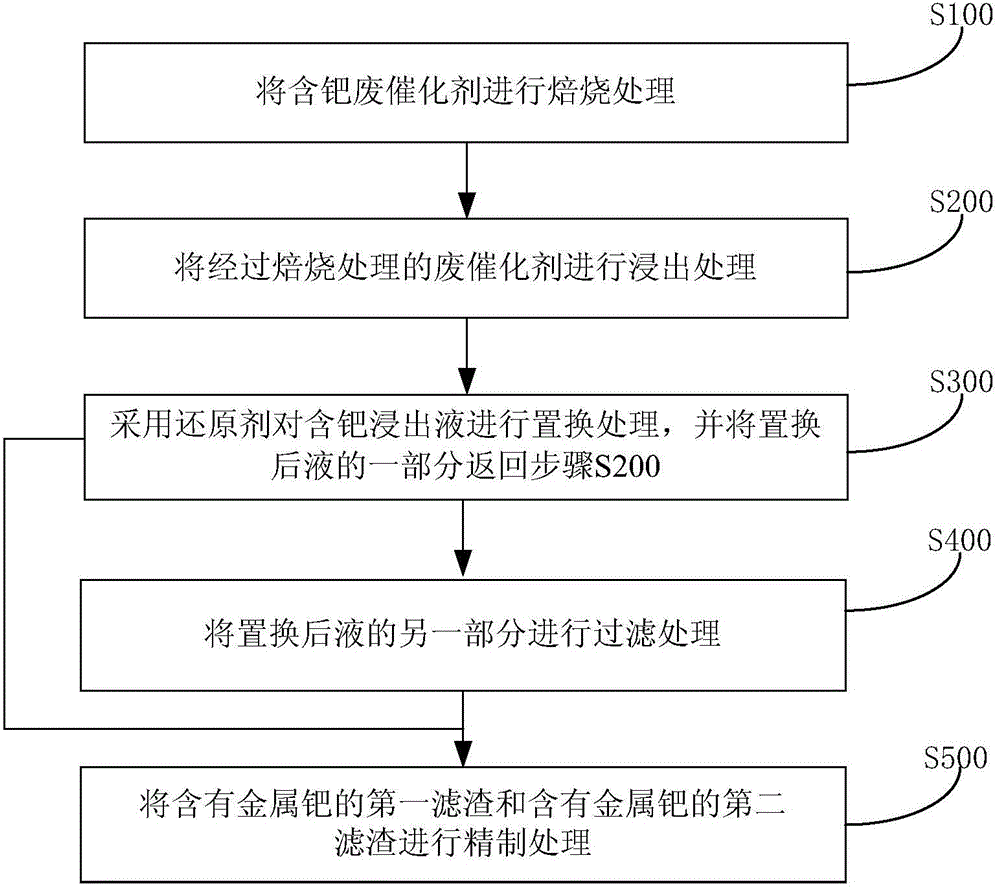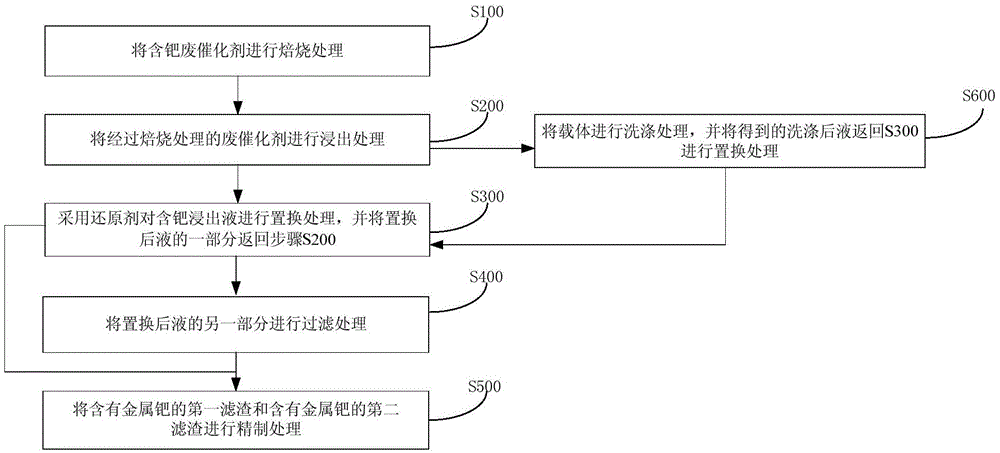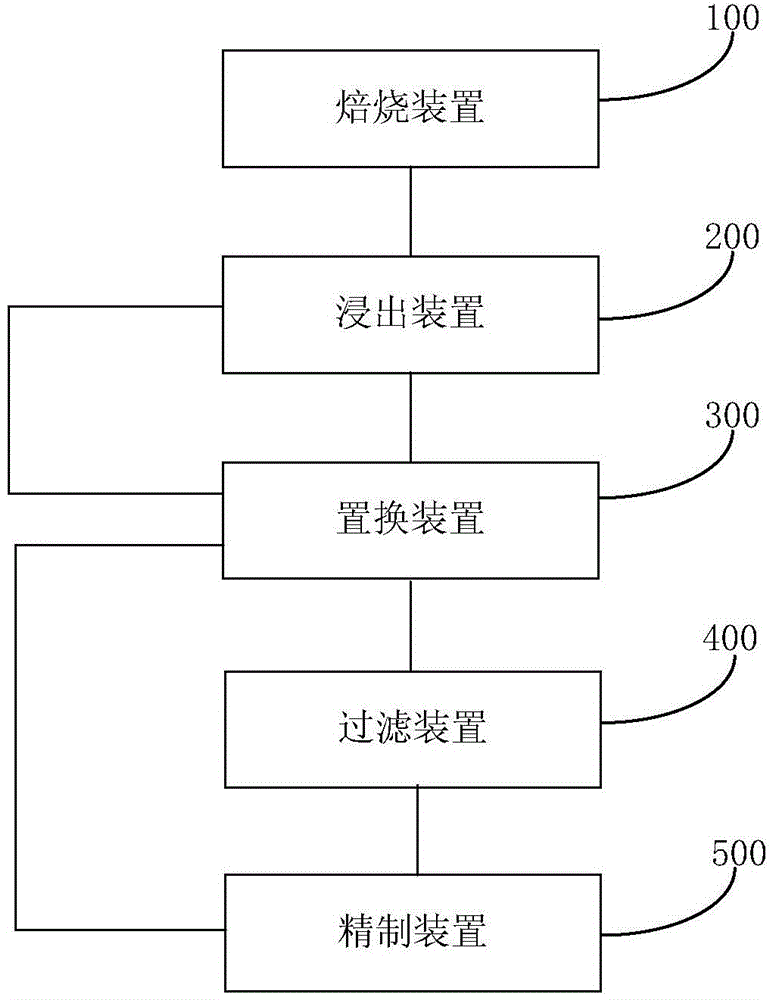Method and system for treating load type palladium-contained dead catalyst
A waste catalyst and supported technology, which is applied in the chemical industry, can solve the problems of difficult filtration, palladium entry, and inapplicability of waste catalysts, so as to improve the use efficiency, reduce the treatment cost, and achieve the effect of reduction
- Summary
- Abstract
- Description
- Claims
- Application Information
AI Technical Summary
Problems solved by technology
Method used
Image
Examples
specific Embodiment
[0043] In one aspect of the present invention, the present invention provides a method for treating supported palladium-containing spent catalyst. According to an embodiment of the present invention, the carrier of the supported spent catalyst can be α-Al 2 o 3 or SiO 2 -α-Al 2 o 3 , it should be noted that SiO 2 -α-Al 2 o 3 Can be understood as containing SiO 2 and α-Al 2 o 3 mixture. Refer below Figure 1-2 The method for treating the supported palladium-containing spent catalyst according to the embodiment of the present invention is described in detail. According to a specific embodiment of the invention, the method includes:
[0044] S100: Roasting the spent palladium-containing catalyst
[0045] According to the embodiment of the present invention, the spent catalyst containing palladium is roasted, so that the carbon deposits and organic matter in the spent catalyst can be effectively removed.
[0046] According to the embodiment of the present invention, ...
Embodiment 2
[0092] Embodiment 2 (the inventive method)
[0093] The spent supported palladium-containing spent catalyst (the carrier is SiO 2 -α-Al 2 o 3 ) was roasted at 600° C. for 3 hours under the condition of dust collection and tail gas absorption, then got 1500 grams of spent catalyst (containing palladium 0.27wt%) after roasting, and divided into 3 parts, each part of 500 grams, numbered respectively as 1#, 2#, 3#, under the condition of negative pressure and tail gas absorption, add 2L of 4.0mol / L hydrochloric acid solution to 1#, heat to 75°C, and slowly add 5-15mL of 10wt% sodium chlorate solution dropwise, After reacting for 1 hour, most of the palladium was transferred to the solution to obtain a palladium-containing leaching solution, and a reducing agent (the addition of iron was 22g / L) was used to replace the obtained palladium-containing leaching solution, so as to reduce the palladium element in the leaching solution, and obtain the substituted leaching solution. liqu...
PUM
 Login to View More
Login to View More Abstract
Description
Claims
Application Information
 Login to View More
Login to View More - Generate Ideas
- Intellectual Property
- Life Sciences
- Materials
- Tech Scout
- Unparalleled Data Quality
- Higher Quality Content
- 60% Fewer Hallucinations
Browse by: Latest US Patents, China's latest patents, Technical Efficacy Thesaurus, Application Domain, Technology Topic, Popular Technical Reports.
© 2025 PatSnap. All rights reserved.Legal|Privacy policy|Modern Slavery Act Transparency Statement|Sitemap|About US| Contact US: help@patsnap.com



